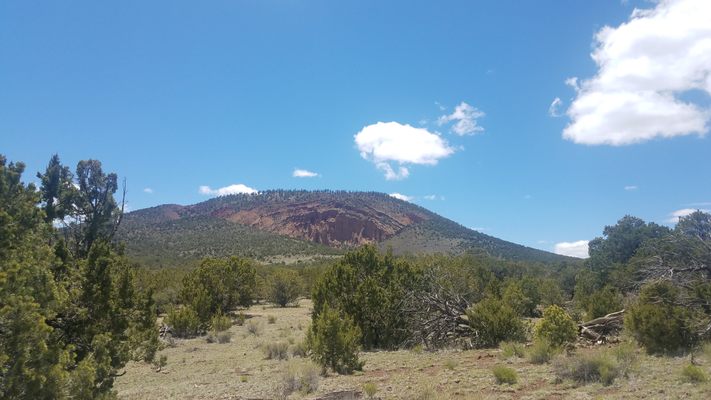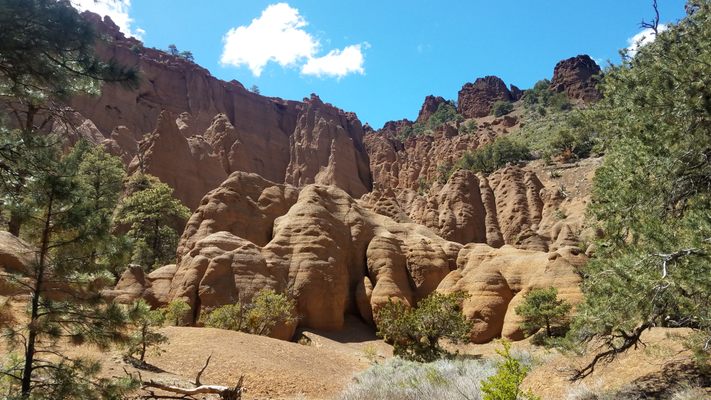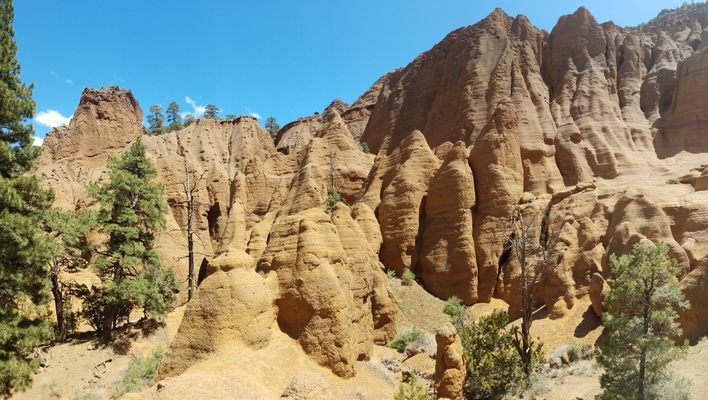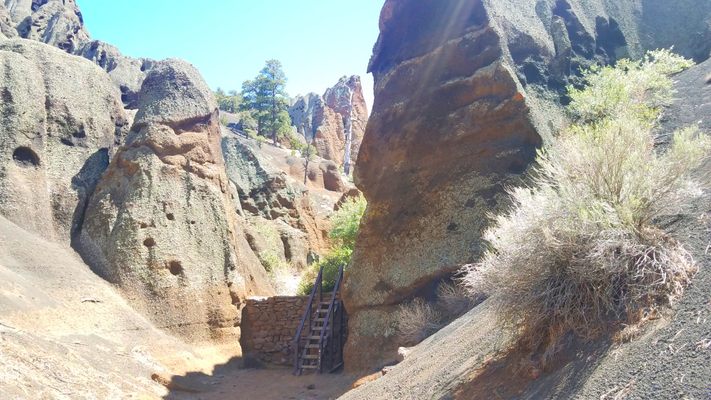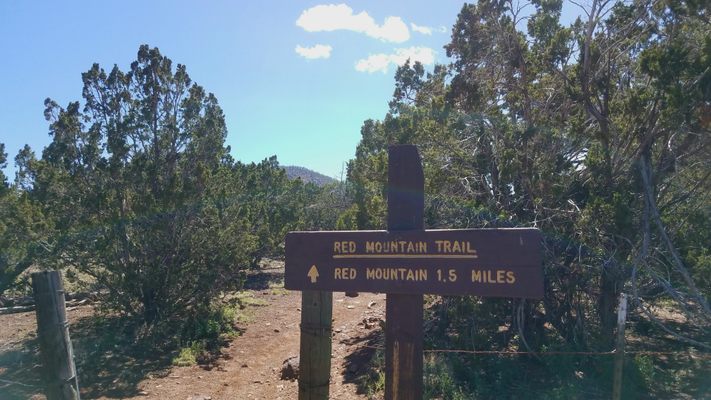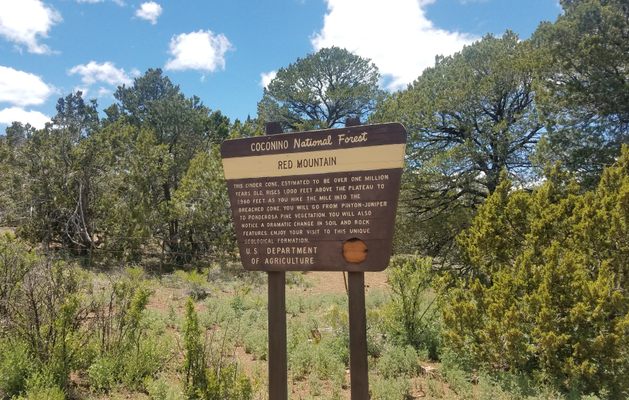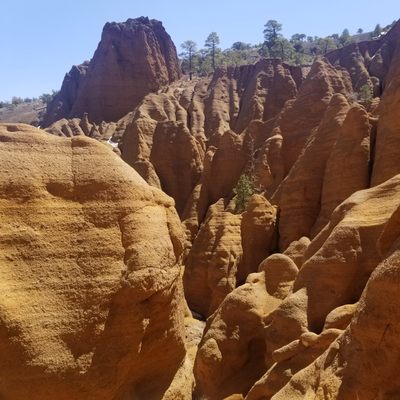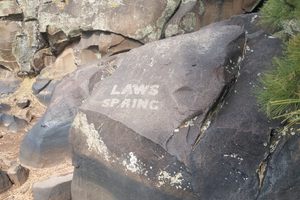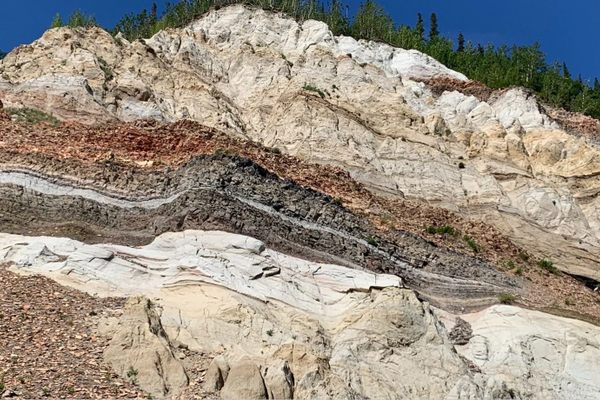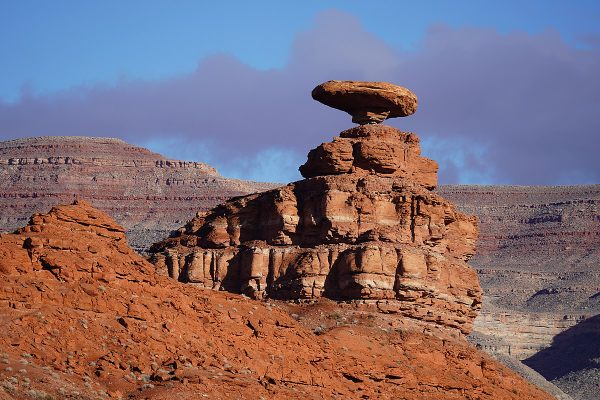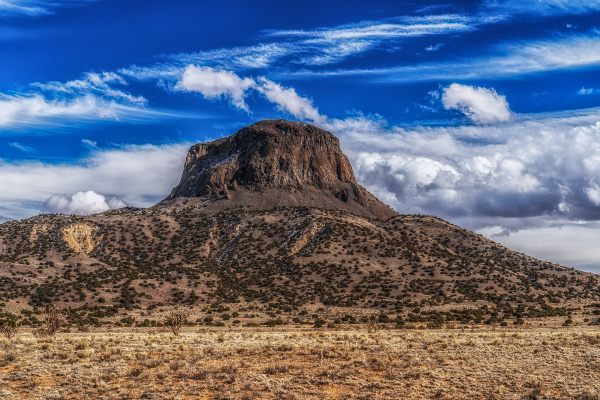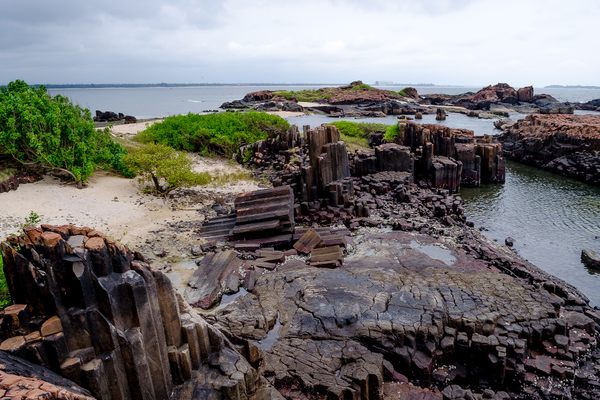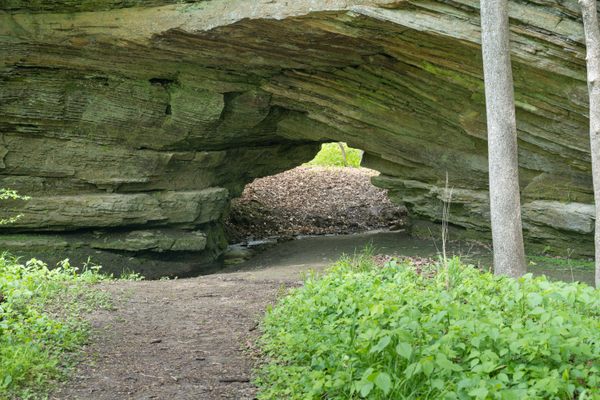About
Approximately 740,000 years ago, a volcanic eruption blasted out the side of a cinder cone volcano in what is now northern Arizona. The volcano is part of the San Francisco Volcanic Field, an 1,800-square-mile area that is crowded with evidence of volcanic activity as recent as 1,000 years ago.
There are over 600 volcanoes in the area between Flagstaff, Arizona, and the Grand Canyon. What makes Red Mountain unique is that its eruption blew out the side of the mountain, leaving it as an odd U-shape and presenting an impressive amphitheater of otherworldly pillars of stone and volcanic materials.
Passed by unnoticed by most tourists en route to the Grand Canyon, the trail up to the core of Red Mountain gently climbs up 300 feet in elevation and presents hikers with views of the transition in ecosystems from pinyon and juniper desert scrubland to high-elevation ponderosa pine forests.
Related Tags
Know Before You Go
The trail between the parking area and the amphitheater of Red Mountain is an easy 3-mile hike roundtrip. Near the end of the trail there is a small ladder built into a rise that goes up 6 feet. If hiking during the summer, be sure to bring plenty of water.
Published
June 5, 2019

